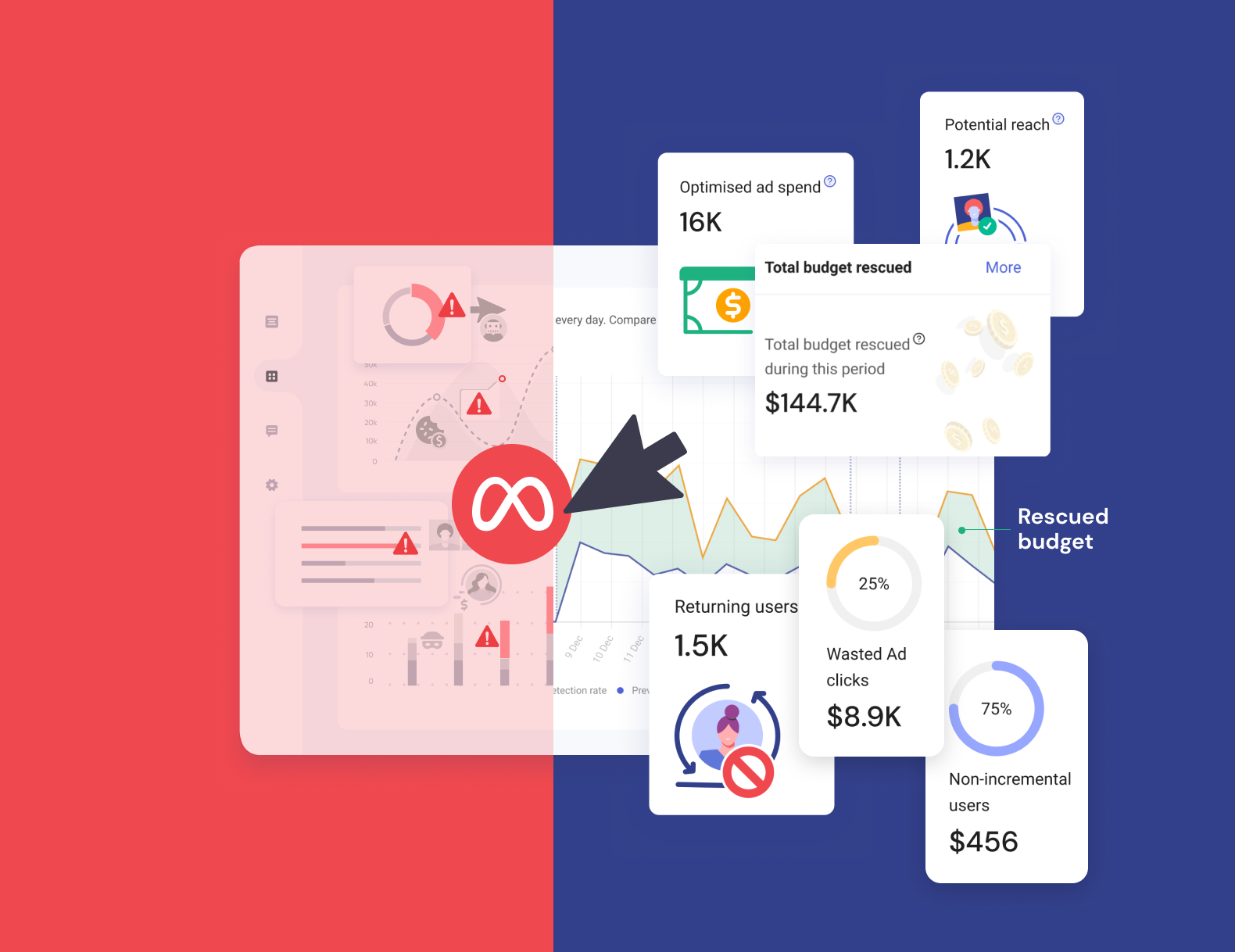The true costs of ad fraud

Chances are, you are well aware of the reported costs of ad fraud. They are, wasted media spend and installs or clicks by non-genuine users. But are you aware of the indirect costs of ad fraud that make up a much larger, more costly picture? You can read more about the true costs of ad fraud in our whitepaper.
The direct costs are real, and they are significant. It is estimated that an advertiser with no fraud detection in place will waste 26% of an advertising budget to ad fraud. In APAC alone, this figure is US$17 million per day wasted on advertising fraud. Furthermore, globally 1 in 13 app installs will not be from genuine users in 2018. This figure is set to increase to 1 in 10 by 2022.
The costs that you don’t see are just as significant.They may be difficult to quantify, but collectively will be costing advertisers and intermediaries financially, in lost time, in poor performance and lost opportunities.
Reacting to fraud by just recovering media spend is like fixing a leaking tap in a burning building. Wasted media spend needs to be addressed, but it is part of a much larger problem. By focussing solely on budget recovery, fraud is being perpetuated. A holistic approach to addressing ad fraud is required in order to treat the root cause and alleviate the costs for all parties in the advertising ecosystem.

Let’s take a closer look at these indirect costs
- Downstream Wasted Media Spend: This is the cost incurred by intermediaries such as networks and agencies in the process of buying traffic for advertising campaigns. These intermediaries typically operate on shorter payment terms than advertisers, that is they pay for their traffic before they receive their payments from their advertising clients. This means when an advertiser reports x% of fraud at billing time, the ad network or agency has likely already paid for it – leaving them out of pocket and the ultimate source of fraud also paid.
- Investment in fraud inflated sources: Fraud makes low-quality sources appear to be high performing by inflating the volume metrics. Advertisers and intermediaries want to invest in the highest performing traffic sources to generate the best possible ROI for their campaigns, so naturally, are led to unknowingly invest in fraud.
- Diminishing campaign optimisation: After a campaign is launched, intermediaries in the traffic supply chain begin optimising to scale activity with the best performing sources. When data is clean, this optimisation process can happen quickly, in some cases, in real-time. If sources lack confidence in the cleanliness of the data, optimisation is slower and decisions carry an element of risk. Ultimately this means that optimisation is hampered and a campaign never reaches its true potential. This is also fuelled by the walled gardens the advertising industry operates in with regards to information transparency. Typically, only the advertiser has access to the IVT reporting and will only share this information on a periodic basis. For a campaign to reach its full potential, intermediaries need the same access to fraud reporting in real-time.
- Damaged reputations and loss of trust: This lack of transparency in the industry can also erode the reputation of intermediaries, who unknowingly supply IVT to their clients. Over time, the trust between advertisers and these intermediaries will diminish and we all know how difficult it can be to repair damaged trust. As a result, it is common to see advertisers frequently replace their traffic sources. This process takes time on the advertisers part and also means that they are more frequently starting cold. Each time a supply source is replaced, the optimisation and learnings from the outgoing source are lost.
- Loss of time to invoice reconciliations, chargebacks and refunds: In a typical advertiser–intermediary relationship, negotiations will occur to reconcile the volume of valid traffic and conversion volumes, often resulting in refunds or credits to the advertiser. This is a time consuming and error-prone exercise for both parties. It also represents an opportunity cost in the time that could be better spent working on strategic decisions to enhance the ROI of the advertising campaigns.
- Threat of litigation: Unresolved conversion volume disputes can expose advertisers and intermediaries to costly and time-consuming litigation cases. This has recently made headlines with the Uber v Fetch case, and as the discussion about the level of ad fraud becomes more sensationalised by the media, we can only assume these cases will become more frequent. Not only do these disputes cost time and money, but they also diminish the value of the product on all sides.
- Opportunity cost: An overarching theme to all of these costs is the opportunity cost of investing in fraud inflated sources. The opportunity cost of time wasted reacting to fraud, the loss of campaign optimisation through scaling fraud inflated sources and the money lost to ad fraud. This time, money and resourcing could be spent delivering actual returns for the company, instead, it is spent reacting to fraud.
To learn more about how to address the direct and indirect costs of ad fraud, download our whitepaper, Addressing Ad Fraud through Multipoint Analysis and Machine Learning.
Get started - it's free
You can set up a TrafficGuard account in minutes, so we’ll be protecting your campaigns before you can say ‘sky-high ROI’.
Subscribe
Subscribe now to get all the latest news and insights on digital advertising, machine learning and ad fraud.








